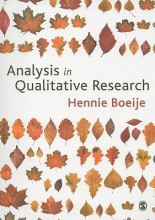Substance disorders
20 important questions on Substance disorders
If we take a medical approach, what is drinking too much alcohol?
- women more than 7 glasses per week
- for men 14 glasses per week
- when it causes physical problems
When we take a sociological approach, what is drinking too much alcohol?
When we take a psychiatric approach, what is drinking too much alcohol?
- Higher grades + faster learning
- Never study anything twice
- 100% sure, 100% understanding
What are typical symptoms of substance use disorder?
- loss of control
- pre-occupation
- craving
- tolerance
- withdrawal symptoms
The dsm 5 distinguishes 3 levels of substance use disorder, mild, moderate, and severe. when do you classify for what level?
- 2-3 symptoms: mild SUD
- 4-5: moderate
- 6-11: severe
What is the lifetime prevalence of alcohol abuse, in the netherlands?
What are some reasons there exist differences across countries when it comes to alcohol dependence?
- cultural differences;
- rituals
- popularity of substance
- early vs. late onset (drinking age)
- definition of problems/functioning/distress
- genetic differences;
- tolerance
- genetic predisposition
Before current models on the onset of addiction, what were the models back in the day, to the current models?
- 1850: moral; people who get addicted are immoral and bad. put in jail
- 1920: pharmacological; the substance is what causes the problem, should be banned
- 1940: symptomatic; people who got addicted had personality that made them drawn to addiction
- 1950: illness; treat with medicines
- 1975: learning (behaviouristic); addiction is a product of classical and operant conditioning
- Late 70’s: social; circumstances, and social status are what causes people to be drawn to addiction
- 1980: biopsychosocial; illness, learning, and social model combined.
- 1990: brain disease; currently the biggest model; addiction is a problem of the brain.
Describe the general developmental process of an addiction
- starts with positive attitude towards the substance
- experimental use
- regular use
- heavy use
- dependence or abuse
- maintenance of dependence
- recovery
- relapse
Describe the incentive sensitisation theory.
- using alcohol or drugs stimulates the reward system in the brain through dopamine.
- the stimulation of the reward system causes rewarding or pleasurable feelings
- frequent usage causes the dopamine system to get more sensitive to the drug, quicker effect, etc.
- classical conditioning causes cues associated with the drug and drug use to cause craving
- classical conditioning also causes cues to become salient
- higher cue sensitivity leads to wanting
- wanting vs. liking
Which dimensions of drinking motives are there?
- positive outcomes; adds something, like enhanced mood (positive internal motive)
- negative outcomes; takes something away
- internal motives; comes from within
- external motives; comes from environment; social rewards (positive external motive)
How is mood alterations a possible drinking motive?
- tensions is reduced due to alcohol myopia
- a reduced cognitive capacity causes a person to focus on immediate distractions, and forget their longer term problems
- drinking causes less attention focussed on tension producing thoughts
How are expectancies about drug effects a drinking motive?
- drinking can be a coping strategy
- People who expect alcohol to reduce stress and anxiety drink most frequently
- Self-medication
Which personality factors can be predictors of SUD?
- Negative emotionality / neuroticism
- Desire for increased arousal & positive affect (sensation seeking)
- Low constraint (impulsivity, low control)
Which social cultural factors are of influence in the onset of SUD?
- availability; usage is higher when alcohol and drugs are easily available
- advertisement and media; countries that ban ads have 16% less consumption
- family factors; parental use, lack of parental monitoring and emotional support, problems in the family
- social network; social influence and social selection
What is necessary for treatment for SUD, and how does this come about?
- motivation to quit or controlled use
- comes when they realize there're other things which are more important, or hit rock bottom
How is motivation for treatment created?
- family interventions
- motivational interviewing
What goals do medicines have in the treatment of SUD?
- replacing the substance
- reduce craving
- gives negative symptoms like nausea, and vomiting if combined with the addictive drug.
Which psychological treatments are there for SUD?
- cognitive behavior therapy
- couples therapy
- motivational interviewing
- contingency management
What are the characteristics of alcoholics anonymous?
- self help group
- Regular meetings provide support, understanding, and acceptance
- 12 step program: e.g., admit powerless over alcohol, inventory and admitting wrongdoings, ask God for help.
- Also: Narcotic Anonymous (NA) Largest self-help group
- Complete abstinence Evidence: not many RCTs
The question on the page originate from the summary of the following study material:
- A unique study and practice tool
- Never study anything twice again
- Get the grades you hope for
- 100% sure, 100% understanding
































